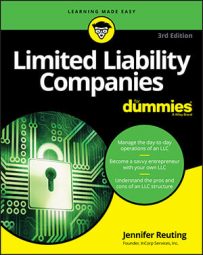When you buy a share of stock on the stock market, the money you pay is what you are contributing (or investing) in return for a percentage (or share) of the company’s ownership. Well, purchasing ownership in an LLC is very similar: In exchange for a membership interest in the company, a person or company must contribute something of value.
This contribution can be in the form of cash, services, hard assets such as equipment, real estate, or even promissory notes (which are allowed in some states).
When a new business is formed, all the initial owners, or founding members, come together and pool the value of their contributions. Say Jane contributes $100,000 in cash, Chris contributes $5,000 in cash and $25,000 in services, and Joe contributes an office building worth $150,000. The combined total of their contributions is $280,000.
To determine each person’s percentage of ownership in the LLC, they simply divide their contributions by the total. The result: Jane gets 35.7 percent, Chris gets 10.7 percent, and Joe gets 53.6 percent.
After you figure out each owner’s percentage of ownership, determining her membership interest in the company is easy. Given the previous example, if the LLC has a total of 1,000 membership shares, then Jane’s 35.7 percent ownership in the company translates to 357 membership shares, Chris’s 10.7 percent results in 107 membership shares, and Joe’s 53.6 percent results in 536 membership shares.
The contributions made by the founding members (the ones who were on board when the company was formed) and their corresponding membership interests are listed in the LLC’s operating agreement. That way, it’s documented that all the owners know what everyone else is contributing to the business and agrees on the value of those contributions.
Things get a bit more complicated when a new member joins an existing company. Newly formed companies have no value — assets are added as contributions. However, when a business has been in operation for a while and elects to bring on additional contributions (and often new members), things can get weird.
Is Apple still worth the $10,000 it took to get things going in Steve Jobs’s garage? Ha! Not even close. As businesses evolve, they increase in value.
Some LLCs issue membership certificates that, like stock certificates in a corporation, are paper evidence of the amount of ownership a member has in the company. The membership certificate displays the member’s name and the number of membership shares the person owns.
However, membership certificates are no longer a legal requirement in most states, and this practice is fading from popularity as our lives go digital. Which is a bit sad, really — there’s nothing like the feel and smell of a newly printed stock certificate representing your stake in an exciting new endeavor.
Whether or not your LLC issues membership certificates, your membership interest should be listed in the operating agreement next to your contribution amount.

